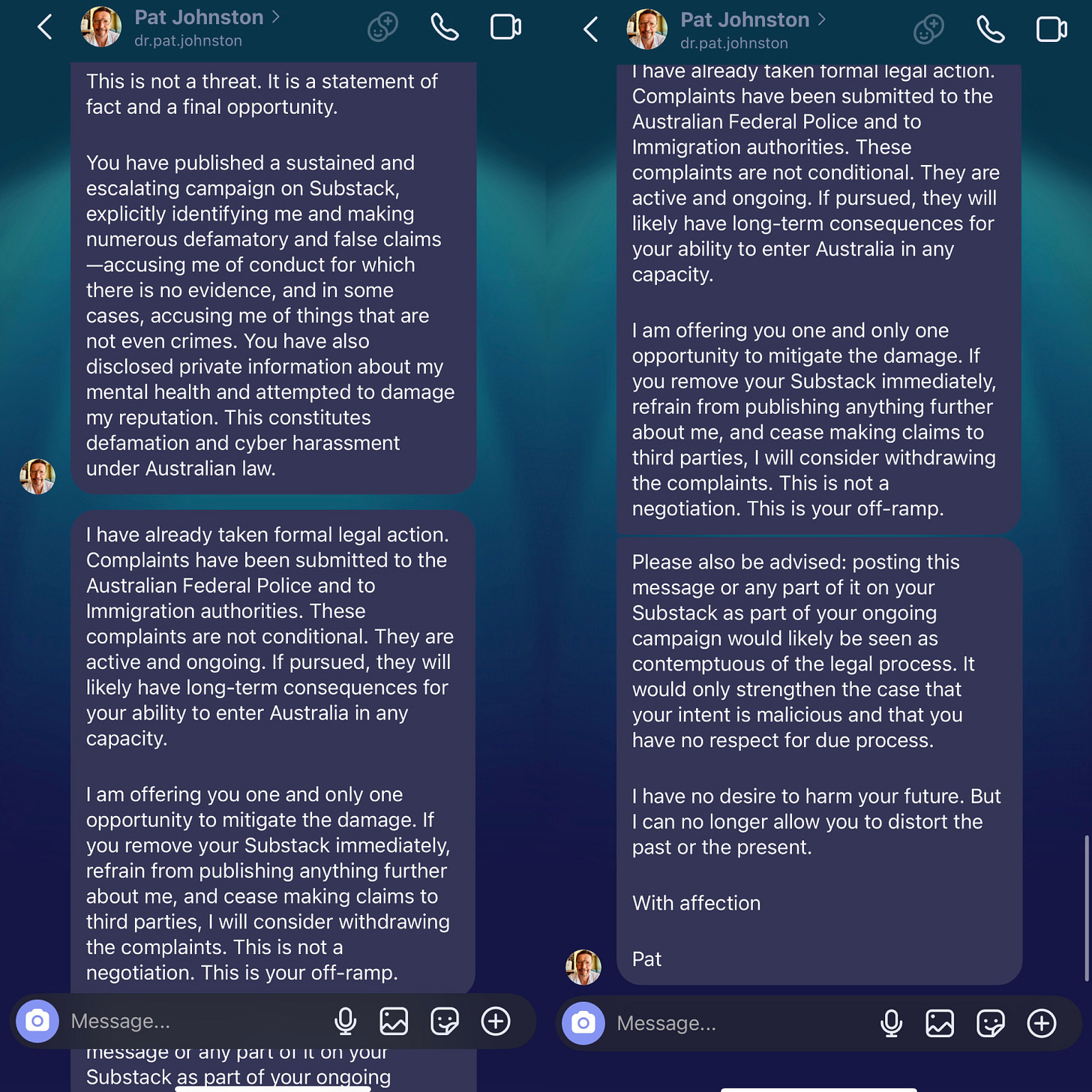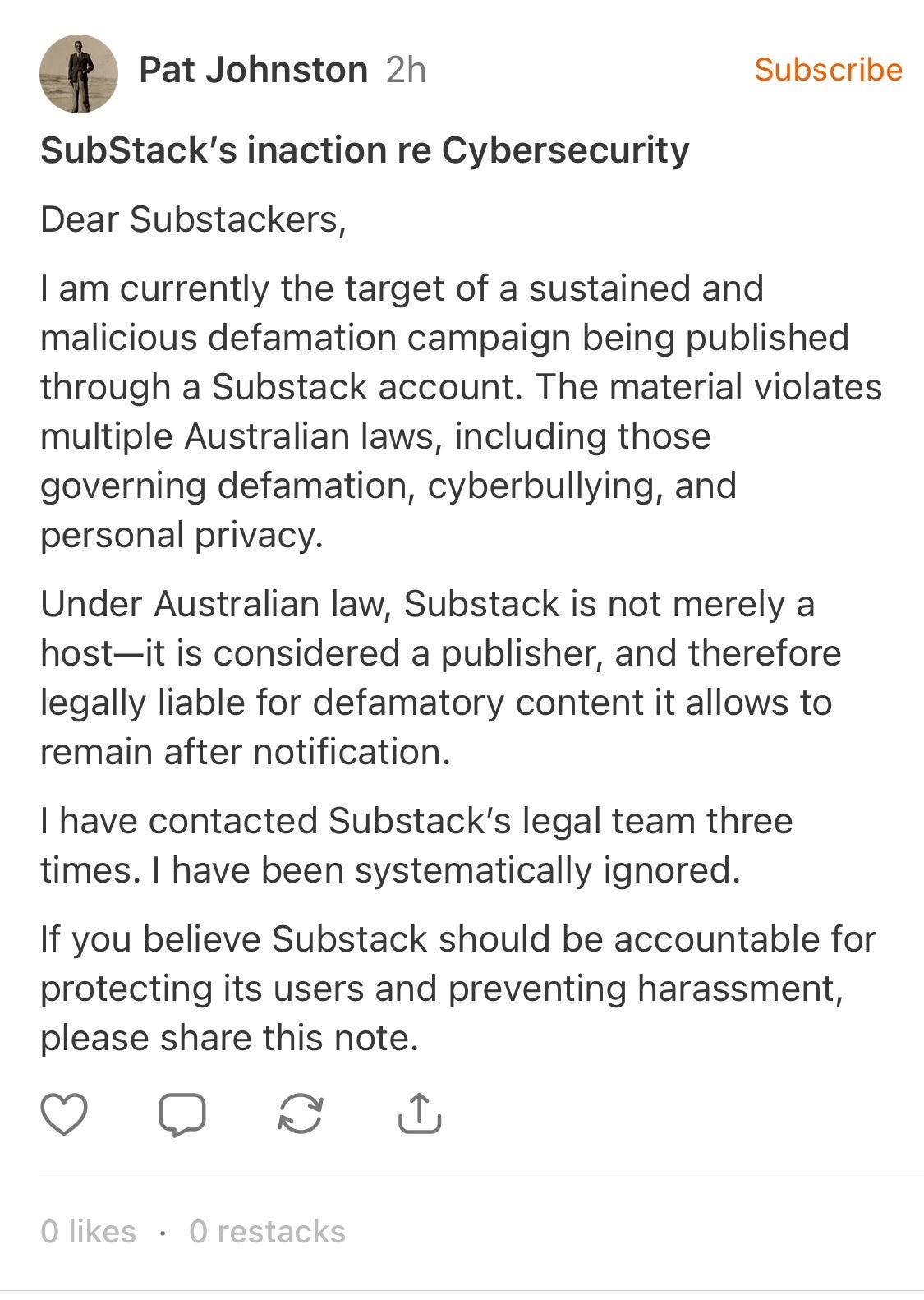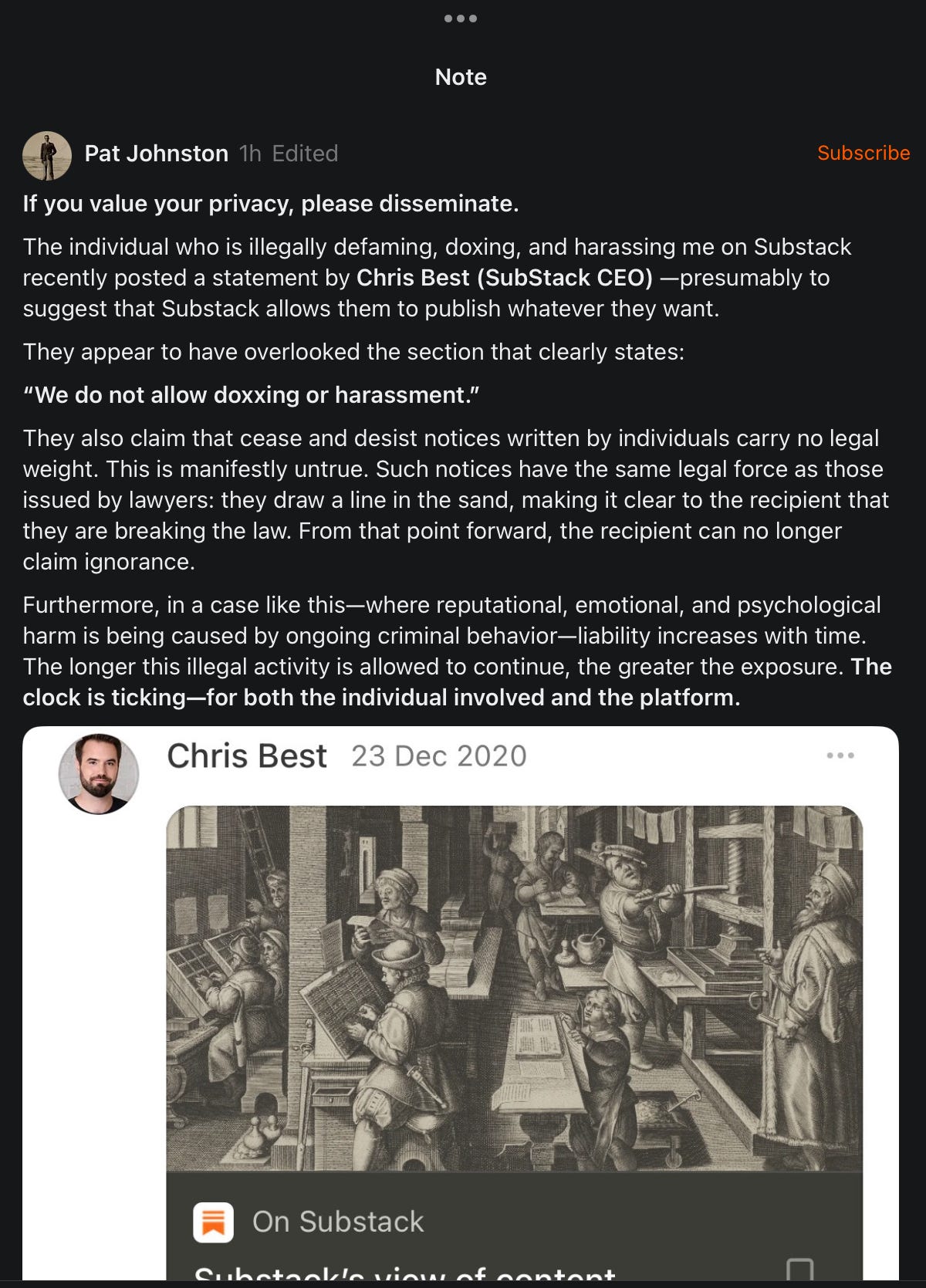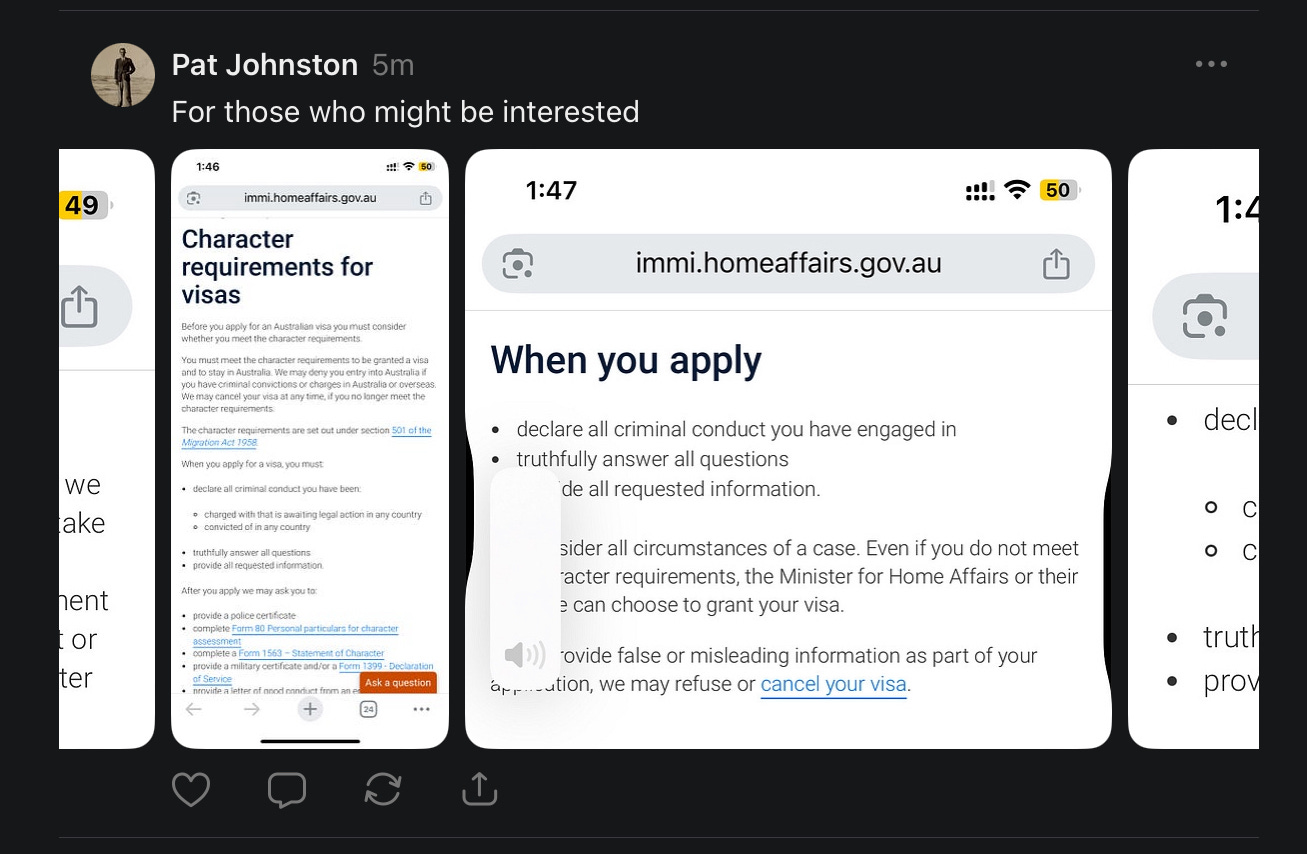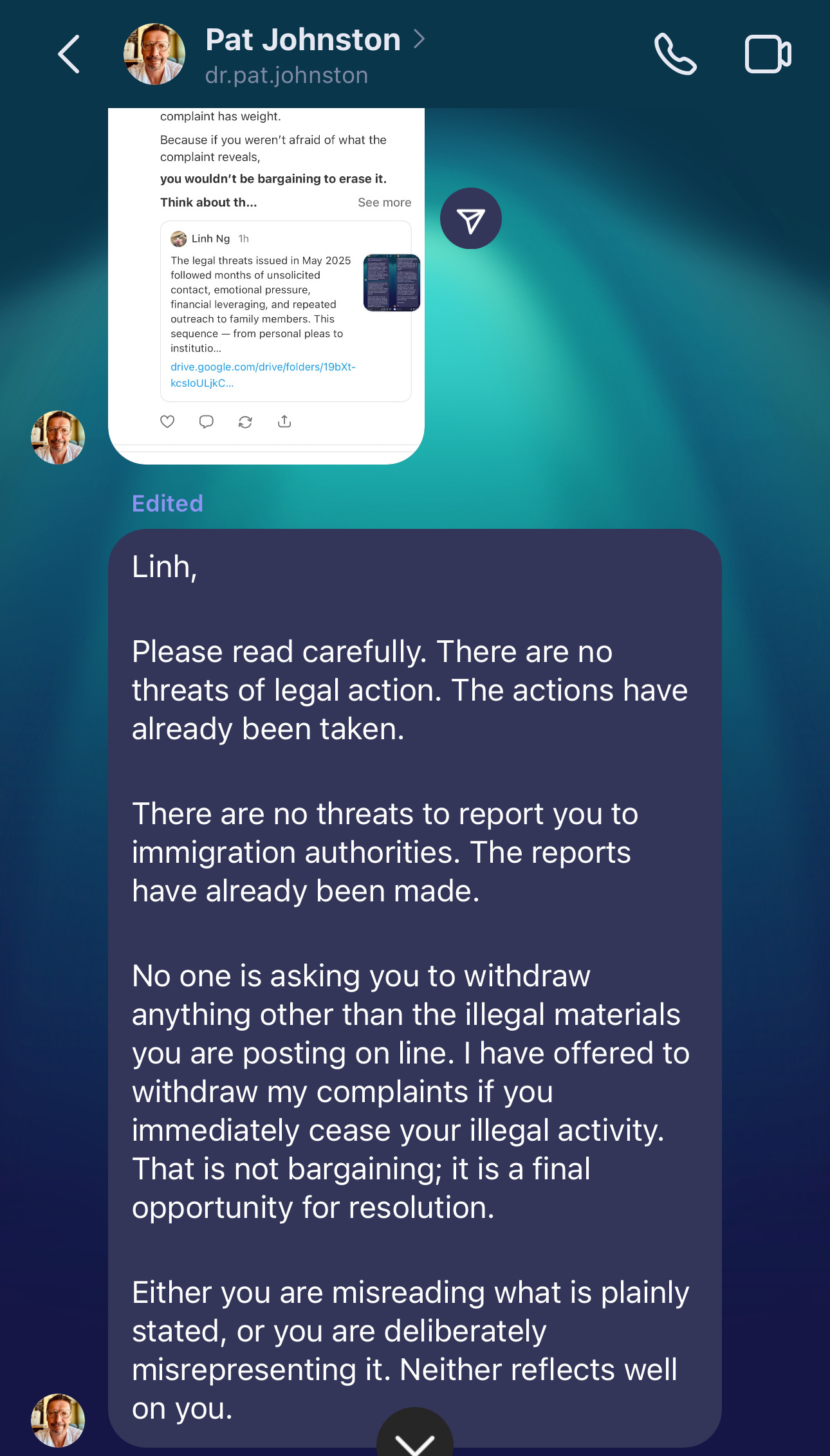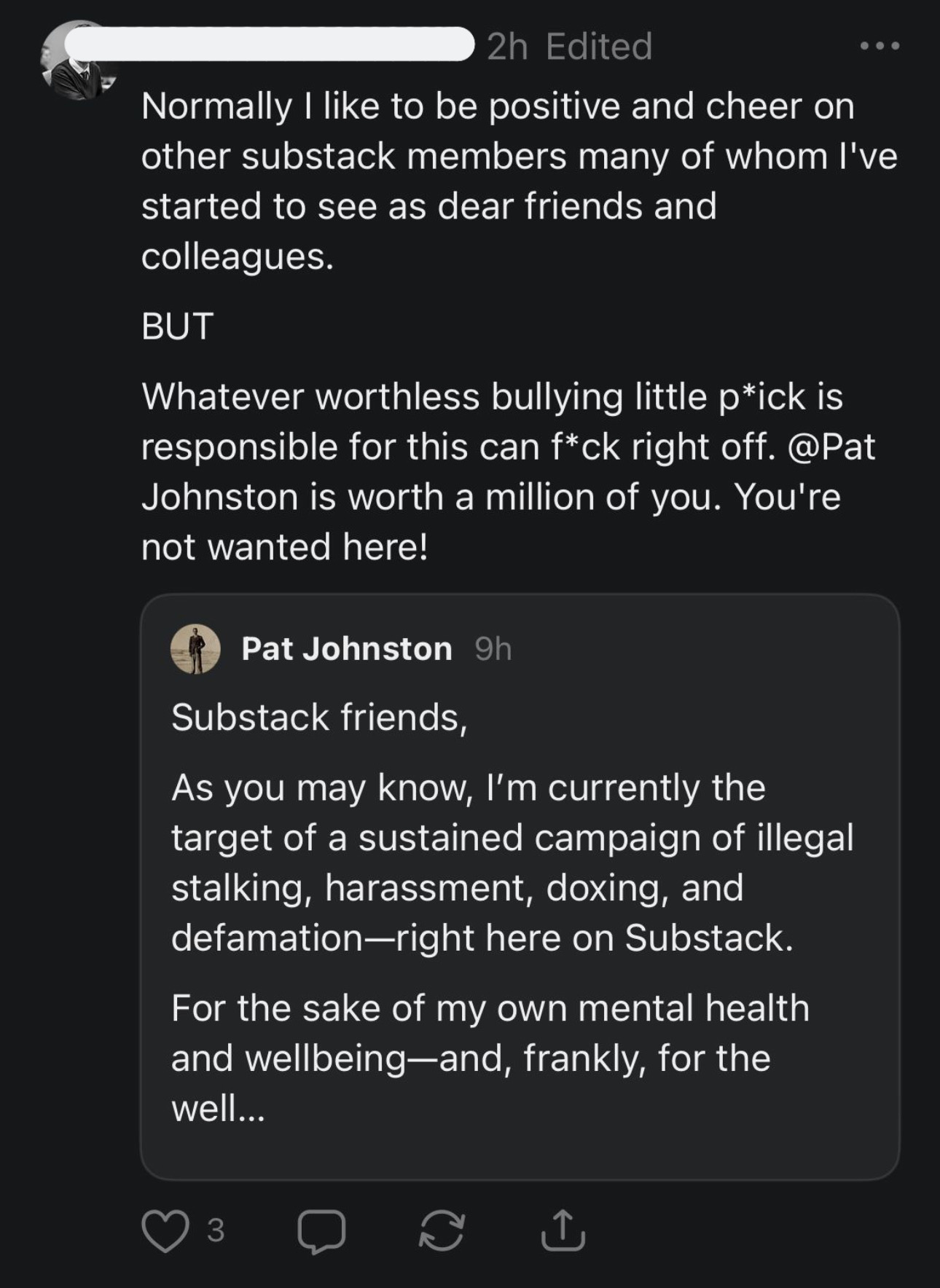Mr. J, a Former Professor Series – Entry 8: What Makes a Scholar Dangerous
What happens when a man teaches the mind – but loses his own?
Context:
This is a critical extra entry for this week — published outside of the regular rhythm due to the earlier public threat.
While this post was not originally scheduled, the symbolic reversal attempted in a recent poem titled “Olding” warranted an immediate clarification of context. This followed a prior poem containing a metaphorical death threat — publicly posted, but never addressed or explained.
The subject of these verses is identified by name due to the severity of the public threats made during that period. Naming is not intended to humiliate, but to preserve the integrity of the record and reflect the seriousness of the documented behavior.
While the individual has since responded publicly, the response has not addressed the core evidence. In such cases, visibility remains necessary. Selective rebuttal is not accountability.
On 16 May 2025, Patrick James Johnston (Pat Johnston), a former academic with past affiliations to Queensland University of Technology, published a public poem containing symbolically violent imagery — including what appears to be a metaphorical death threat.
His publication history (e.g., via ResearchGate) has included over 100 academic articles and 3,000+ citations — making the symbolic violence in his recent poem particularly concerning.
The poem includes references to a “revolver” and the line “I’m saving one / for your heart”, which—when read in context—suggests a direct symbolic threat masked as emotional narrative.
This post is also supported by a formal report submitted to the Queensland Police Service (QPS) — (Ref: QP250074XXXX) concerning the psychological threat embedded in the poem. Reference ID and submission materials are archived and available for institutional verification upon request.
A copy of the reported material, including screenshots and metadata, has been included in the documentation trail for transparency and legal context.
Disclosed here solely for verification of formal submission. No confidential or investigative detail is shared.
This documentation practice is aligned with standards of narrative ethics and academic integrity in public risk reporting, and is shared in good faith based on verifiable evidence.
Full public evidence available here.
Exhibit A — Screenshot of the original poem (archived prior to deletion)
The following image was captured directly from Patrick James Johnston’s public post on 16 May 2025.
The original post is publicly available here at the time of writing. A full archive with timestamps has been retained for evidentiary purposes.
Shortly after the poem containing symbolic threats was shared, Johnston posted another piece titled “Olding” — shifting tone dramatically toward melancholy and self-pity.
Lines such as:
“And you will feel sad / And unwanted”
attempt to reframe the narrative into one of quiet suffering — while the prior violent metaphor remained unaddressed.
Legal Risk Context (Applicable in Complaint and Threat Assessments):
Public statements — even when framed as artistic expression — may trigger investigation if three key conditions are met:
• The content contains violent imagery or metaphors (e.g., firearms, targeted harm)
• There is a specific reader reasonably identifiable as the target
• There is a documented history of prior coercion, intimidation, or psychological distress related to the same parties
In this case, all three conditions are present.
The risk is not only symbolic — it is cumulative, contextual, and legally traceable.
Under threat assessment standards, symbolic expression may be considered legally relevant when violent imagery is paired with a known history of harm and a clearly identifiable target.
This case meets all applicable criteria.
⸻
Forensic & Legal Interpretation
Title: Metaphor This (2)
Subject Type: Digital literary post (poetry)
Author Status: Alleged respondent in prior harassment reports
⸻
1. Structural Analysis: Symbolic Violence
The poem draws deliberate parallels between anatomy (“my heart has four chambers”) and weaponry (“my revolver has six”), culminating in the line:
“I’m saving one / For your heart”
This metaphor transitions from figurative to explicitly threat-based imagery, mimicking the structure of a veiled death threat masked as emotional narrative.
⸻
2. Legal Risk Indicators: Implied Threats
While framed as a poem, the phrase “I’m saving one for your heart” in context with “revolver” qualifies as a conditional threat under legal definitions in many jurisdictions (e.g., Criminal Code Act 1995 - Cth, s.474.15A in Australia on using a carriage service to menace or harass).
The poem may be interpreted as “literary pretext for violence” — a known tactic in harassment cases, especially when the author has a history of personal grievance toward a named or implied individual.
⸻
3. Forensic Context: Escalation Pattern
If the individual has a documented pattern of indirect threats, coercion, or digital harassment, this entry fits within a larger symbolic retaliation matrix:
Phrases like “whilst yours skips a beat” and “saving one for your heart” suggest a power dynamic and a fantasy of last word / last action.
It reflects fantasized agency through harm, common in threat-projection behavior post-rejection or loss of control.
⸻
4. Use in Institutional or Funding Reports
This text can be cited in:
Ethics Committee or Research Integrity reports: As an example of how former academics might exploit metaphor to bypass accountability while issuing symbolic threats.
Safety and Risk Assessments for Funding Bodies: To demonstrate emotional volatility, risk to public discourse, and potential safety hazards if this individual were to return to teaching, writing, or mentoring roles.
Substantiating No-Contact or Protective Orders: The poem’s metaphor about storing a bullet for someone’s heart may be admissible as evidence of ongoing psychological intimidation, especially if prior warnings or legal incidents exist.
⸻
5. Conclusion
This poem is not just emotionally manipulative — it is structurally encoded with threat intent.
Presented as artistic ambiguity, it leverages aesthetic shield to bypass scrutiny while enacting symbolic violence. This is a classic case where form masks force, and it warrants legal and institutional review, especially in the context of an ongoing harassment pattern.
Update: May 20, 2025 — Public Threat Escalation
Following the above publication and documentation of symbolic threat patterns, a new message was received from the same individual (Patrick Johnston), this time in the form of a direct legal ultimatum. The message stated:
“These complaints are not conditional… They will likely have long-term consequences for your ability to enter Australia in any capacity.”
This message was delivered after 76 days of unsolicited contact and was framed as an offer “with affection,” demanding the immediate removal of this documentation from public view — or else triggering consequences involving the Australian Federal Police (AFP) and Immigration authorities.
Exhibit B — Screenshot of private message received on May 20, 2025.
The offer to withdraw complaints in exchange for silence suggests not a defense of truth, but a trade for impunity. This is not the language of innocence — it is the vocabulary of avoidance.
A few hours later, he posted a public complaint on Substack titled “Substack’s Inaction re Cybersecurity,” accusing the platform of violating Australian laws for not removing this series. This complaint, like the private message, attempts to reposition legal systems as retaliatory tools in response to documented public risk disclosures.
Exhibit C — Public Note published by Pat Johnston (captured May 20, 2025; archived prior to deletion)
Why Substack did not remove this series, even after being contacted “three times”:
“We believe in the free press and in publishing controversial and difficult ideas. Our content guidelines are built to protect against threats and violence, not disagreement or discomfort.”
— Chris Best, Hamish McKenzie & Jairaj Sethi, Substack Trust & Safety Statement, 2020 (source)
The original post is publicly available here at the time of writing. A full archive with timestamps has been retained for evidentiary purposes.
This reference is provided for institutional verification. In case of removal, metadata and screenshot archives are available upon request.
Update: May 21, 2025 — Public Escalation Targeting Platform Executive
Exhibit D — Public Note published by Pat Johnston (captured May 21, 2025; archived prior to deletion)
The original post is publicly available here at the time of writing. A full archive with timestamps has been retained for evidentiary purposes.
This reference is provided for institutional verification. In case of removal, metadata and screenshot archives are available upon request.
On May 21, 2025, the individual Patrick James Johnston (Pat Johnston) posted a public message addressed directly to Substack CEO Chris Best, demanding immediate action against this publication. The post alleged violations of Australian law, citing three self-issued Cease and Desist notifications, and framed Substack as legally culpable for the content.
The message concluded with the phrase:
“As CEO the buck stops with you.”
— A rhetorical move intended to pressure the platform’s executive into suppressing documented public reporting.
This incident follows a pattern of escalating coercion:
Emotional appeals and veiled threats (via poetry),
Direct legal ultimatums in private messages,
Now platform-level pressure aimed at executives and content moderation infrastructure.
At the time of writing, no formal court orders, defamation rulings, or takedown mandates have been issued. Substack has not removed the content, reaffirming its public stance that:
“Our content guidelines are built to protect against threats and violence, not disagreement or discomfort.”
— Substack Trust & Safety Statement, 2020
Exhibit E – Legal Rhetoric as Retaliation Tactic
Public note published by Patrick Johnston (captured May 21, 2025; archived prior to deletion)
The original post is publicly available here at the time of writing. A full archive with timestamps has been retained for evidentiary purposes.
This reference is provided for institutional verification. In case of removal, metadata and screenshot archives are available upon request.
For the record:
A Cease and Desist letter authored by a private individual does not carry the same legal force as one issued by licensed legal counsel. Statements to the contrary are factually incorrect and may constitute pseudo-legal coercion — particularly when paired with public demands directed at platform executives.
The law is not determined by how confidently one types the word “illegal.”
Exhibit F – Misuse of Immigration Policy in Retaliatory Rhetoric
Public note published by Pat Johnston (captured May 21, 2025; archived prior to deletion)
The original post is publicly available here at the time of writing. A full archive with timestamps has been retained for evidentiary purposes.
This reference is provided for institutional verification. In case of removal, metadata and screenshot archives are available upon request.
Not everyone quoting the law is trying to educate.
When legal systems fail to silence, some resort to weaponizing borders.
This exhibit documents a new escalation tactic: using immigration policy as a rhetorical weapon to intimidate a public-interest whistleblower.
In the latest phase, the individual began posting screenshots from the Australian Department of Home Affairs — citing visa refusal criteria such as “criminal convictions,” “false or misleading information,” and “harassment or stalking.”
Rather than addressing the allegations or challenging the documented timeline, the individual chose to share these legal references — not in context, but as an implied threat.
In isolation, such material may seem neutral.
But in the context of 70+ days of coercive contact, legal ultimatums, and reputational pressure, these posts acquire a different weight.
The subtext was clear:
“Continue speaking, and you might lose your visa.”
But the legal threshold for immigration consequences is not defined by personal vendettas —
and certainly not by screenshots partially blocked by volume buttons.
Quoting immigration policy out of context to intimidate a whistleblower is not only manipulative — it signals desperation disguised as authority.
Exhibit G (Supplemental Addendum)
Ongoing Messaging – Reframing of Prior Threats as “Final Opportunity”
On May 21, 2025, after the release of Exhibits B, the individual sent another message attempting to reframe his previous ultimatums as non-threatening. In this message, he states:
“There are no threats of legal action. The actions have already been taken.”
This rhetorical shift does not reduce the coercive nature of the earlier messages. Instead, it confirms that legal and immigration complaints were actively filed, and that these actions are now being used retrospectively as leverage. The message reiterates conditional withdrawal offers:
“I have offered to withdraw my complaints if you immediately cease your illegal activity.”
The individual then goes on to accuse the recipient of misreading or deliberately misrepresenting the exchange — a classic gaslighting tactic aimed at shifting blame and undermining perception.
Key Observation:
This messaging reinforces the manipulative logic behind prior ultimatums — revealing that the threat was not only issued, but is now being reframed as a “final opportunity for resolution.” The attempt to appear neutral or benevolent (e.g., “no one is asking you to withdraw anything other than illegal materials”) obscures the core issue:
When legal processes are used not to pursue truth but to suppress criticism, they cease to be justice — and become leverage.
Exhibit H: Strategic Withdrawal or Tactical Rebrand?
Public note published by Pat Johnston (captured May 21, 2025; archived prior to deletion)
The original post is publicly available here at the time of writing. A full archive with timestamps has been retained for evidentiary purposes.
This reference is provided for institutional verification. In case of removal, metadata and screenshot archives are available upon request.
On 21 May 2025 — following over 70 days of unsolicited contact, coercive messaging, legal threats, and reputational pressure — the individual at the center of this case issued a public statement announcing a “step back from the platform,” citing concern for mental health (both theirs and, notably, mine).
This shift follows multiple attempts to suppress documentation through:
Three pseudo-legal cease-and-desist notices
Immigration-based threats implying visa interference
Direct appeals to Substack leadership
Repeated public claims of defamation — without substantiating evidence
Now, the narrative pivots again — adopting the language of benevolence:
“Frankly, for the wellbeing of the person behind it…”
This is not accountability.
This is reputational rebranding following failed silencing efforts.
When public documentation becomes irrefutable, the final tactic is often a strategic retreat — masked as virtue.
Let the record show:
Silence is not innocence.
A quiet exit does not erase a public trail.
Exhibit I — Screenshot of Public Obscene Defense Post (Name Redacted)
The image below captures a Substack comment posted on May 21, 2025, by a supporter of Pat Johnston. The comment contains vulgar language in defense of Johnston, in response to his public announcement about stepping back from the platform.
“Whatever worthless bullying little p*ick is responsible for this can f*ck right off.
@Pat Johnston is worth a million of you. You’re not wanted here!”
The name and profile image of the commenter have been withheld to preserve relevance and avoid unnecessary exposure of non-primary individuals.
This post exemplifies the tone and nature of some of Johnston’s online supporters — aggressive, vulgar, and hostile toward dissent. While not directly authored by Johnston, the post illustrates the rhetorical atmosphere surrounding his public rebranding and retreat.
In such cases, tone culture becomes part of the evidence — reinforcing why some witnesses choose public documentation over private negotiation.
This escalation has now been documented and added to formal complaint records with QPS, TEQSA, ACSC, and relevant ethics authorities. Supporting screenshots and metadata have been archived in the following evidence repository:
Evidence archive (public version): View here.
The subject escalated to family-level coercion and later sought to reframe his actions as expressions of personal suffering — a familiar tactic in emotionally manipulative cycles.
The legal threats issued in May 2025 followed months of unsolicited contact, emotional pressure, financial leveraging, and repeated outreach to family members. This sequence — from personal pleas to institutional intimidation — reflects a manipulation pattern, not a pursuit of truth or justice.
Such behavior undermines the credibility of his claims, revealing them as reactive and retaliatory rather than principled.
This documentation is not published to escalate, but to clarify. The decision to disclose was made only after private intimidation persisted through familial threats, reputational coercion, and legal ultimatums — warranting a public record for transparency and accountability.
I remain fully willing to cooperate with any formal or institutional investigation concerning the reported conduct.
All linked evidence has been prepared for institutional review and verification.
⸻
Disclaimer:
Linked materials are shared for public interest reporting and institutional transparency. Where personal information (e.g. phone number, email) appears, efforts have been made to partially obscure such data while preserving contextual integrity. No content was published with intent to cause harm or harassment. All documentation relates to reported misconduct currently under institutional review.
Institutional Handling Summary (as of April–May 2025)
ACSC (Australian Cyber Security Centre)
Initial complaint regarding digital symbolic misuse and unsolicited literary contact post-breakup. While ACSC stated they are not the final handler of interpersonal abuse cases, they forwarded the matter to Queensland Police.
Internal tracking ID and officer engagement confirmed via follow-up correspondence.Queensland Police Service (QPS)
Formal report submitted (Ref: QP250074XXXX), including documentation of emotional coercion, digital threats, and symbolic harassment. Acknowledged and subsequently referred to a designated officer for follow-up communication.TEQSA (Tertiary Education Quality and Standards Agency)
Complaint accepted and logged as Official: Sensitive, citing reputational misuse of academic affiliation and ethical risks related to coercive publication targeting a former partner. Status: under documentation hold; no public action confirmed.Department of Home Affairs (Australia)
Formal statement submitted regarding the individual’s threats to weaponize immigration law. Documentation included clarification of residency status, legal compliance, and a request for cross-agency alignment. Evidence archive linked for transparency.
AFP (Australian Federal Police)
Proactive correspondence submitted to clarify potential misuse of federal reporting channels. The individual was reported for repeated retaliatory threats involving immigration and legal coercion tactics. Statement forwarded for record consistency.
This publication is made in good faith, grounded in first-hand documentation, and has been submitted to relevant authorities including QPS, AHRC, TEQSA, ACSC, AFP, and the Department of Home Affairs.
Any attempt to suppress this content through legal threats or coercive tactics may constitute a SLAPP (Strategic Lawsuit Against Public Participation) — a misuse of legal systems to silence public interest reporting.
Update (June 10, 2025): Counter-Takedown Filed — Fair Use & Survivor-Led Documentation
On June 9, I received a formal DMCA notice from Google informing me that Patrick Johnston had submitted a copyright takedown request targeting my publicly accessible survivor evidence folders documentation already submitted to QPS as part of police evidence.
This content, previously submitted to law enforcement in the context of unwanted contact and coercive behavior, cannot retroactively be reframed as protected intellectual property for the purpose of silencing survivor documentation.
Any takedown request targeting such material constitutes a strategic misuse of copyright law, not a legitimate rights claim.
These files were published strictly under academic Fair Use and Fair Dealing protections, as part of an ethics-based documentation series. This takedown is not a valid copyright dispute, but a coercive response to institutional criticism.
Attempts to assert copyright over police-submitted evidence constitute a serious ethical and potentially legal breach. Such actions may be interpreted as obstruction of justice and retaliation against protected reporting
This is not copyright protection. This is reputational panic, disguised as a takedown notice.
The content was non-commercial, already submitted to Queensland Police (QPS) and regulators under official case IDs. Its removal constitutes an attempt to suppress documented harms rather than enforce legitimate rights. Misusing copyright mechanisms in this manner may qualify as a form of strategic litigation against public participation (SLAPP).
My publication falls squarely within the thresholds of:
Australian Copyright Act 1968 – Sections 41 & 42 (Fair Dealing)
U.S. Copyright Law – §107 (Fair Use)
International norms protecting public interest commentary and trauma documentation.
I have submitted a formal counter-notice. As per standard procedure, Google has forwarded the takedown request to the Lumen Database, where it is now publicly visible as part of platform transparency archives.
View takedown request on Lumen
If harassment persists, I reserve the right to escalate this matter to ethics boards, international legal monitors, and public interest watchdogs tracking strategic censorship and retaliatory misuse of institutional tools.
Any misuse of personal information obtained via counter-notice or takedown responses will be treated as further coercive harassment and may be reported to law enforcement under digital harm and privacy abuse frameworks.
No individual has the right to suppress survivor-led documentation solely on the basis of personal discomfort — especially when such material pertains to evidence already submitted to law enforcement.
Read the full series
- Entry 1: The Man Who Taught Me Ethics by Failing All of Them
- Entry 2: The Disappearance of the Public Poet
- Entry 3: The Hanging Tree Case Study
- Entry 4: Hidden Like Accountability
- Entry 5: The Collapse of Assumptions
- Entry 6: The Ethics of a Tinder Bio
- Entry 7: How He Ate Told Me Everything
- Entry 8: What Makes a Scholar Dangerous —What happens when a man teaches the mind – but loses his own? (you are here)
- Entry 9: Fragment of Life, Fragment of Accountability
- Entry 10: Anatomy of Disappointment
- Entry 11: Legal Defense Challenges: A Framing Statement
- Entry 12: Six Years After Ronell – What Academia Still Doesn’t Get
- Entry 13: QUT and The Man Who Raped Me
- Entry 14: Why Sarcasm Toward Institutions Can Backfire
- Entry 15: P*ssy or Toxic Masculinity?
- Entry 16: Who is Your Favorite Comedian?
- Entry 17: And What is Your Favorite Song?
- Entry 18: Grant Proposal — Narrative Ethics as Survivor-Led Forensics
- Entry 19: The Coward Behind the Clone
- Entry 20: [URGENT HIRE] CRISIS COMMUNICATIONS SPECIALIST
- Entry 21: [URGENT] Legal Counsel Needed for Complex Reputation Rehabilitation
- Entry 22: YOU’RE AN ABUSER. STOP CONTACTING ME
- Entry 23: Seeking Counsel for a Fallen Academic
- Entry 24: Internal Legal-PR Briefing
- Entry 25: For Journalists – Legal & Ethical Clearance Summary
- Entry 26: Symbolic Prostitution, Transactional Intimacy, or Just a “Loan”?
- Entry 28: Why He Simply Cannot Shut Up
- Entry 29: Forensic Commentary on “LARGE Language Muddle”
- Entry 30: Don’t Just Threaten My Future. Because I’m Going To Archive Your Present
- Entry 31: Open Letter to the Person Who Tried to Break Me with Defamation
- Entry 32: Defamation, Harassment, Doxxing Class 101
- Entry 33: Confidential Crisis Recovery Proposal
- Entry 34: Forensic Behavioral-Somatic Report
- Entry 35: Forensic Commentary on the Tattoos
- Entry 36: QUT and the Abuser They Once Had
- Entry 38: When Poetry Becomes Revenge Porn
- Entry 40: A Man Built for Applause, Not Accountability
- Entry 41: Neurobehavioral Addendum
- Entry 43: Why Does It Sound Like a War Metaphor?
- Entry 44: Forensic Commentary on Racialized and Fetishizing Language in “Hidden Like Rice”
- Entry 45: Public Misuse of Former Academic Affiliation
- Entry 46: The Two Things That Didn’t Leave a Bad Impression
- Entry 47: When Affection is Just an Alibi (A Bundy-Inspired Reflection)
- Entry 48: Humbert, Lolita, and the Fetish of Fragility
- Entry 49: The Fetish of Smallness as Symbolic Violence
- Entry 50: Motif Risk Analysis
- Entry 52: Can an Abuser Be a Good Father?
- Entry 53: Who Protects the Children?
- Entry 54: From Blackmail to Children
- Entry 55: A Letter I’ll Never Send
- Entry 56: Outc(L)assed - Critical Race Analysis
- Entry 57: Forensic Breakdown: “A Voidance” by Johnston
- Entry 58: Johnston, Who Raised You?
- Entry 59: Public Financial Terms & Narrative Conditions
- Entry 60: What Kind of Future Do You Think Awaits You?
- Entry 61: Why I Believe He Has No Real PR or Legal Team
- Entry 62: Why I Can Legally (and Ethically) Call You a Pathetic Pig
- Entry 63: Tell Me You’re a Pathetic Pig Without Telling Me You’re a Pathetic Pig
- Entry 65: Did Your Mother Teach You To Speak Like This?
- Entry 66: Nobody Cares Anyway
- Reflection: The Miscalculation
(More entries coming soon)
→ [Back to Start: Introducing Mr. J, a Former Professor Series]
© 2025 Linh Ng. All rights reserved.
This publication is intended for educational and reflective purposes only.
Sharing the original link is welcomed and encouraged.
Please do not reproduce, redistribute, or translate this content — in whole or in part — without written permission.
This piece reflects both lived experience and critical analysis. It is not meant to be detached from its author or reframed without context.
Misuse or decontextualization may lead to formal clarification or takedown requests.
This work has been reviewed and quietly followed by scholars, educators, and ethics professionals across multiple sectors.
If your institution is engaging in critical discourse around narrative justice, symbolic coercion, or representational ethics, feel free to connect via Substack DMs or formal channels.
A regulatory case regarding this matter has already been classified under a protected status within national education integrity systems.
Should any reputational countermeasures or distortions arise, I reserve the right to publish the documented timeline, behavioral patterns, and contextual metadata.
All relevant documentation has been submitted through formal legal and regulatory pathways.
Photo cover by Jan Antonin Kolar on Unsplash





